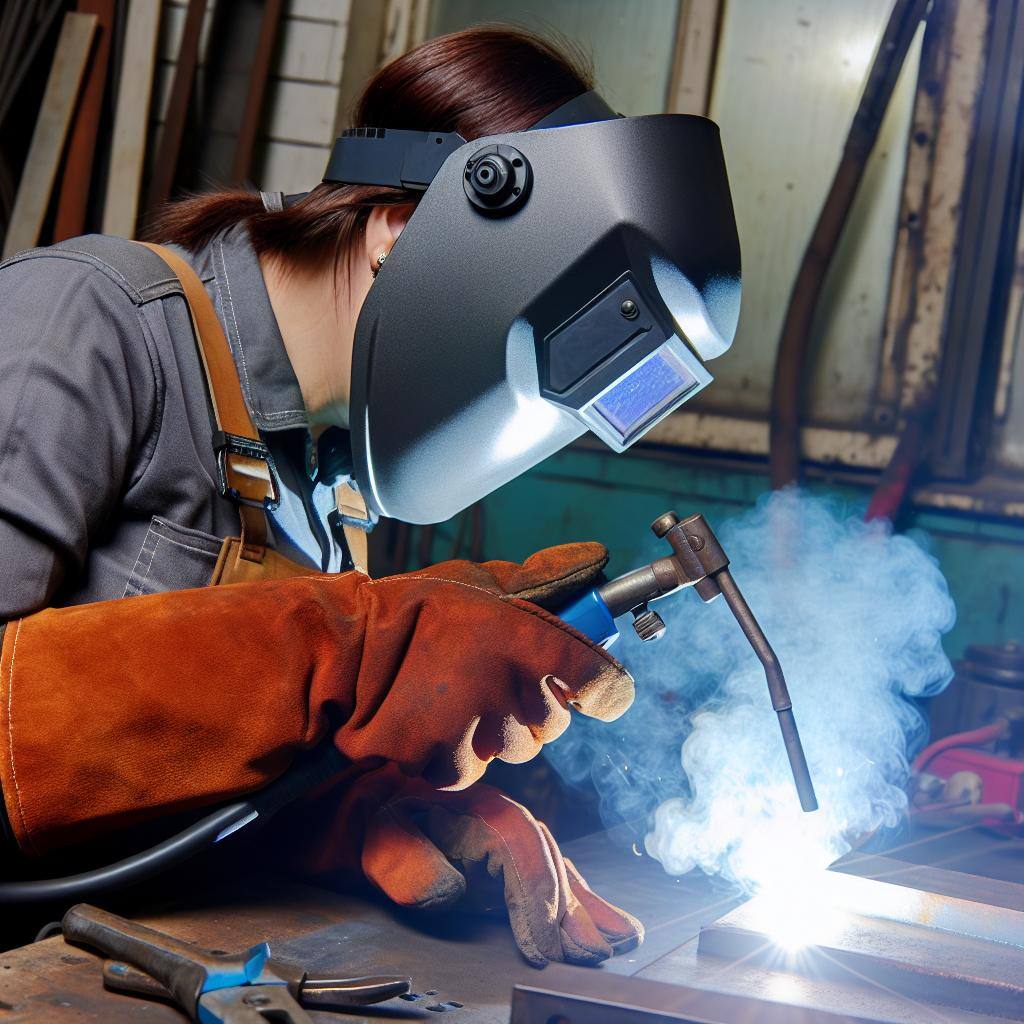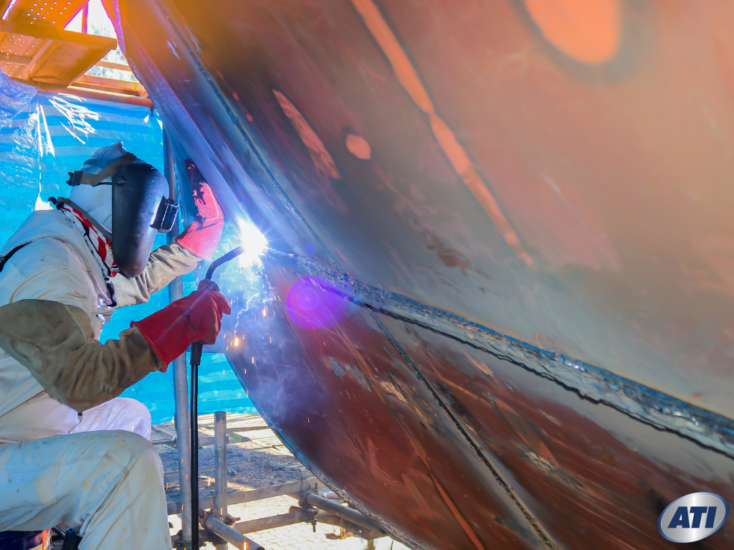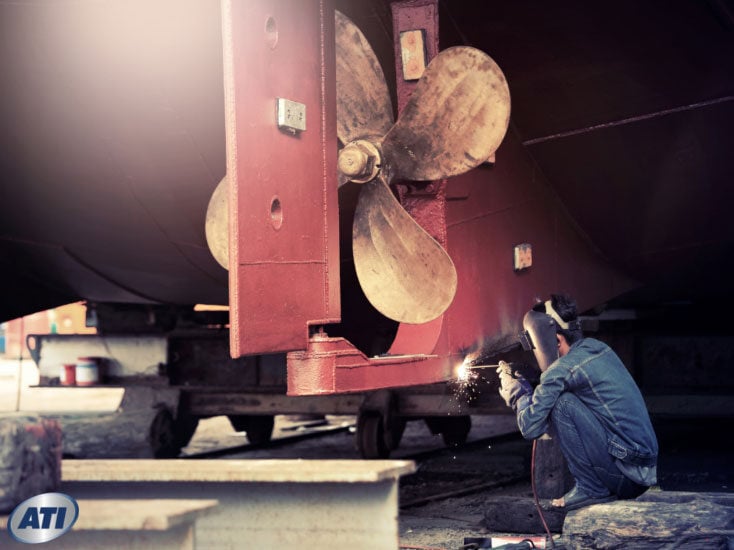What is Welding?
Welding is a process that joins materials, such as metals or plastics, by melting and fusing them together. This skill is crucial for building and fixing things used every day like buildings, bridges, cars, and pipelines. Welding is essential in many industries, including construction, manufacturing, and repair work. With this guide we'll explore the science, history, techniques, applications, and future trends of welding. We will also cover specific topics such as: MIG welding, TIG welding, welding schools, laser welding, stick welding, underwater welding, stick welders, arc welders, and weld symbols.
Quick Links
-
What Does a Welder Do?
-
The Science Behind Welding
-
History of Welding
-
Welding Techniques
-
Applications of Welding
-
Different Types of Welders
-
Welding Safety Measures
-
Welding Inspection and Quality Control
-
Welding Innovations and Future Trends
-
Weld Symbols and Their Importance
-
Welding Schools and Training
-
Welding in the Future
What Does a Welder Do?
A welder is a skilled tradesperson who uses high-heat equipment to fuse metal parts together, creating everything from structural steel frameworks to intricate metal art. Their work is essential in industries like construction, manufacturing, shipbuilding, and automotive repair. Welders interpret blueprints, select appropriate welding techniques—such as MIG, TIG, or stick welding—and ensure joints are strong, precise, and meet safety standards. Beyond just melting metal, welders must inspect materials, maintain equipment, and often work in challenging environments that require both physical stamina and keen attention to detail. Their craftsmanship forms the backbone of many of the structures and machines we rely on every day.
The Science Behind Welding
Welding relies on scientific principles to join materials. First, heat generation is used. Welding uses intense heat to melt the materials at the joint. This heat can come from an electric arc (arc welding), a gas flame (oxy-fuel welding), a laser, or an electron beam. Second, fusion takes place. The melted materials form a molten pool, or weld pool. When this pool cools and solidifies it creates a strong bond between the pieces. Third, shielding is used. To prevent contamination from the air, welders use shielding gases (like argon) or flux coatings to protect the molten weld pool. Next comes solidification and cooling. The cooling rate affects the weld's properties. Quick cooling can make the weld harder but more brittle, while slow cooling makes it more flexible. Lastly, metallurgical changes take place to change the microstructure of the materials, affecting their behavior and strength.
History of Welding
Welding has ancient roots, with evidence of early welding from the Bronze Age. The Egyptians used welding over 5,000 years ago to make iron tools. Modern welding started in the 19th century with arc welding and oxy-fuel welding. Arc welding, which uses an electric arc to melt metals, was developed in the late 1800s. Strong advancements in welding techniques happened during World War I and World War II to meet the demands of building military equipment.
Welding Techniques
Here are several common welding techniques, each for different materials and uses:
Shielded Metal Arc Welding (SMAW) / Stick Welding: Uses a consumable electrode coated in flux. An electric current forms an arc between the electrode and the metals. It's versatile and used for many types of metals. Stick welders are mainly used in construction and repair jobs because of their simplicity and low cost.
Gas Metal Arc Welding (GMAW) / MIG Welding: Uses a continuous wire feed as an electrode and an inert gas to protect the weld pool. It's efficient and often used in automotive and manufacturing industries. MIG welders are valued for their speed and ease of use.
Gas Tungsten Arc Welding (GTAW) / TIG Welding: Uses a non-consumable tungsten electrode and an inert gas. It creates high-quality, precise welds and is used in aerospace and other precision-required fields. TIG welders are known for their skill and ability to produce clean welds.
Flux-Cored Arc Welding (FCAW): Like MIG welding but uses a wire with a flux core that generates shielding gas. It's suitable for outdoor welding where wind might blow away the shielding gas.
Submerged Arc Welding (SAW): Uses an arc between a continuously fed electrode and the workpiece, submerged under a blanket of flux. This method is highly productive and used for welding thick steel sections.
Laser Welding: Uses a laser beam to melt the materials being joined. It's precise and used for thin materials or complex shapes, commonly found in the automotive and electronics industries.
Underwater Welding: Performed in wet environments. This requires special equipment and training due to unique challenges and hazards. Underwater welders often work on repairing ships, oil platforms, and pipelines.
Applications of Welding
See how welding is used in different industries:
- Construction: Welding is used in the construction of buildings, bridges, and other infrastructure. Steel frameworks, pipelines, and reinforcement bars are welded to ensure structural integrity and longevity. Welders in construction often work on site.
- Manufacturing: In manufacturing, welding is used to assemble everything from small electronics to large industrial machinery. The automotive industry relies heavily on welding for constructing vehicle bodies, frames, and other components. Factories use automated welding systems to increase production efficiency.
- Aerospace: The aerospace industry demands precise and high-quality welds for constructing aircraft, spacecraft, and missiles. Welding techniques like TIG and laser welding are preferred for their precision and strength. Aerospace welders often work in controlled environments to ensure the highest quality.
- Shipbuilding: Welding is crucial in shipbuilding for joining large metal plates and sections. Techniques like SAW and MIG welding are commonly used to ensure the structural integrity of ships. Shipbuilders work on massive structures, requiring strong and durable welds.
- Oil and Gas: The oil and gas industries use welding for constructing and maintaining pipelines, rigs, and refineries. The ability to weld under various conditions, including underwater, is vital for this sector. Welders in this industry often work in harsh environments and must follow strict safety protocols.
Different Types of Welders
Welders can specialize in various areas, each with unique skills and applications. There are production welders who work in factories, mass-producing products and parts. Structural welders focus on building structures like bridges and buildings. Pipe welders specialize in welding pipelines for oil, gas, and water. Aerospace welders work on aircraft and spacecraft, requiring high precision. Shipyard welders join large sections of ships, often working in challenging conditions. Lastly, Certified Welding Inspectors (CWIs) inspect welds to ensure they meet standards and codes.
Welding Safety Measures
Safety is a top priority in welding. It is important to be aware of these key safety measures. Wearing Personal Protective Equipment (PPE) is vital. PPE in welding includes helmets, gloves, aprons, and protective clothing to prevent burns and injuries. Next, ventilation is an important safety measure. Proper ventilation is essential to remove harmful fumes and gases. Welding areas should also be free of flammable materials, and fire extinguishers should be readily available for fire prevention. Lastly, welders should receive regular training on safety procedures and the proper use of equipment.
Welding Inspection and Quality Control
Ensuring the quality of welds is crucial for safety and durability. Here's how it's done:
- Visual Inspection: The first step in quality control, checking for obvious defects like cracks, porosity, and undercut.
- Non-Destructive Testing (NDT): Techniques like X-rays, ultrasonic testing, and magnetic particle inspection are used to detect internal defects without damaging the weld.
- Destructive Testing: Involves cutting and examining a sample weld to understand its strength and properties.
- Standards and Codes: Welds must meet industry standards and codes set by organizations like the American Welding Society (AWS) and the American Society of Mechanical Engineers (ASME).
Innovations and Future Trends
The field of welding is continually evolving, with innovations aimed at improving efficiency, quality, and safety. Some of the trends include automation and robotics. Automated welding systems and robotic welders are becoming more common in manufacturing. These systems improve precision, speed, and consistency, and reduce the reliance on human labor and minimize errors. Factories use robots for repetitive welding tasks, freeing up skilled welders for more complex jobs.
Another innovation is using advanced materials. The development of new materials, like high-strength steels and advanced composites, is driving the need for innovative welding techniques. Methods like friction stir welding and laser welding are growing for their ability to fuse these advanced materials effectively. These materials are used in industries like aerospace and automotive for their strength and lightweight properties.
Simulation and training are evolving. Virtual reality (VR) and augmented reality (AR) are being used to train welders, providing a safe and controlled environment to practice and hone their skills. These technologies also help in planning and visualizing complex welding tasks. Welding schools use VR simulators to give students hands-on experience without the risks.
Health and safety have made advances in protective gear and fume extraction systems are enhancing the safety of welding operations. Research into reducing harmful emissions and improving working conditions continues to be a priority. New technologies aim to make welding safer for workers, lowering exposure to harmful fumes and improving ventilation in workspaces.
Sustainability in welding is also advancing. The welding industry is exploring ways to reduce its environmental impact, including developing more energy-efficient welding processes and recycling materials. Sustainable practices are becoming integral to the industry's future. Companies are looking for ways to minimize waste and reduce energy consumption during welding operations.
Weld Symbols and Their Importance
Weld symbols are an important part of welding documentation to provide detailed instructions on how a weld should be performed. These symbols are used in blueprints and technical drawings to convey information about the type, size, and location of welds. Understanding weld symbols is crucial for welders, as it ensures that the welds meet the required specifications and standards.
- Basic Weld Symbols: Basic weld symbols indicate the type of weld, like fillet, groove, plug, or slot welds. Each symbol has a specific shape and orientation that communicates the type of joint and the welding method to be used.
- Supplementary Symbols: Supplementary symbols provide additional information about the weld, such as whether it is to be welded on-site or in a shop, the welding process to be used, and any finishing requirements.
- Arrow and Reference Line: The arrow points to the location of the weld on the drawing, while the reference line connects the arrow to the weld symbol. This combination provides clear and concise instructions for the welder.
Welding Schools and Training
Becoming a skilled welder requires proper training and education. Welding schools offer programs that teach the fundamentals of welding, including various techniques, safety practices, and the interpretation of welding symbols. These programs range from short courses to comprehensive diploma and degree programs.
A typical welding school curriculum includes hands-on training with different welding processes, welding theory, blueprint reading, and safety practices. Students learn to work with various materials and understand the principles of metallurgy. Many welding schools offer certification programs that prepare students for industry-recognized certifications, such as those provided by the American Welding Society (AWS). Certification demonstrates a welder's competence and can enhance job prospects. Graduates of welding programs can pursue careers in various industries, including construction, manufacturing, automotive, aerospace, and oil and gas. Welding skills are in high demand, and certified welders often enjoy competitive salaries and job stability.
Welding in the Future
The future of welding is bright, with several trends shaping the industry. Continued development of automated and robotic welding systems will increase efficiency and precision in manufacturing. Integration of smart welding technologies like sensors and data analytics will monitor and optimize welding processes in real-time. Innovations focused on green welding will reduce the environmental impact of welding through energy-efficient technologies and sustainable practices. Increased global collaboration between industries and educational institutions worldwide will be used to share knowledge and advancements in welding.
Welding Conclusions
Welding is a vital technology that has shaped the modern world, enabling the construction of everything from skyscrapers to spacecraft. Its applications span numerous industries, each with unique requirements and challenges. As welding techniques and technologies continue to evolve, the industry is poised to become even more efficient, precise, and safe. The future of welding promises exciting advancements that will further enhance its role as the backbone of modern industry. Whether you're interested in becoming a welder or just want to understand the importance of welding, this field offers a rewarding career filled with opportunities for growth and innovation.
Industry Knowledge
Welcome to the Advanced Technology Institute's Blog, your resource for industry insights and discussions on technologies shaping the future of automotive, heavy vehicle, hvac, welding, and other related career paths.
Explore how ATI's curriculum and hands-on learning opportunities can propel your career in the tech-driven world.

%201.jpg?width=756&height=424&name=ATI-Welding-022720-%20(1)%201.jpg)
.jpg)

